There is nothing on this earth more horrifying and nerve-wracking than reaching the front of the line at a sub shop. You’re about to be bombarded with 16 questions about exactly what you want on your sandwich, and to be fair, you know exactly what you want on your sandwich. But if you say anything wrong or trip over your words then the worker is going to put banana peppers all over your collaborative culinary masterpiece, and even if they take them off, the sandwich is forever sullied with that weird oily zesty taste.
My point here is that building a Commander deck is a lot like ordering a sandwich, except social anxiety plays no role. With the arrival of Commander Masters, now’s as good a time as any to make the leap into Magic’s most popular format. Picking out 100 different cards can be pretty daunting, equally as daunting as deciding whether or not it’s weird to put three different dressings on the same sandwich. (It’s not, by the way. That’s how you get to Flavortown.)
Luckily the deck building process can be broken down into 5 easy steps, none of which require you to tell an uninterested restaurant employee that you can’t have red meat. I’ll be deckbuilding along with you and providing examples at each step of what I picked and why. You can see the full deck list HERE.

STEP 1: The Flavor Pallet (Your deck’s Commander and goal)
The first step is to decide on one extremely important thing: a deckbuilding goal. Think of this as the flavor pallet of your deck. A deckbuilding goal is what you want this deck to do in-game, and it should be something that can be easily summed up in a sentence.
The following are solid examples of deckbuilding goals:
“I want to sacrifice a whole lot of creatures every turn and get rewarded for doing so.”
“I want to quickly fill up my graveyard and reanimate big creatures.”
“Each turn I want to have as many lands enter the battlefield under my control as possible.”
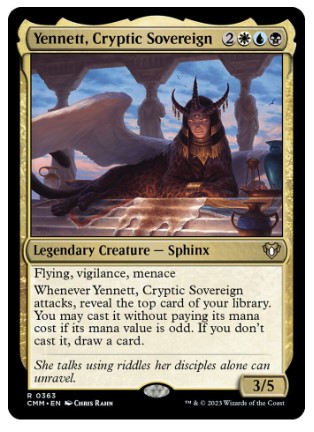
If you’re at a loss, many commanders will point you in a distinct direction. For example, the first sample deckbuilding goal was written with Teysa Karlov in mind. Or you can choose a broad gameplay goal and then find a commander that fits that niche. For my example deckbuild with this article I’ve decided my goal is “I want to manipulate the top of my library and play cards from it, ideally for free.” The freshly-reprinted Yennett is perfect for this game plan since it gives me a reliable payoff for manipulating the top cards of my deck.
STEP 2: The Bread (Lands)
Every sandwich is only as good as the bread it’s on, and the same is true for Commander decks. All your big splashy plays won’t be happening unless you’ve got a solid mana base that reliably lets you hit your land drops and have all the colors you’ll need.
The most important question here is “How many lands should I run?” The easy and safe answer is about 37 lands and 63 non-land cards including your commander, give or take a couple in either direction. The less easy answer is that it depends on your deck building goal. If you’re building a deck that cares a lot about having many lands under your control, you’ll likely want to bump up the number of lands so that you can reliably have many of them. I’d recommend your deck to not have less than ~34 lands unless you’re ready for a plethora of serious issues, or have extremely particular deck building goals. (Looking at you, Goblin Charbelcher.)
Be sure to fill out your mana base with a healthy dose of lands that tap for multiple colors, as well as a helping of basic lands just in case. If there are any utility lands that synergize with your overall theme, try them out and see how they play. For example, since the Yennett deck I’m building cares about the top of my library I’m running Halimar Depths and Mortuary Mire to manipulate what goes in that zone.
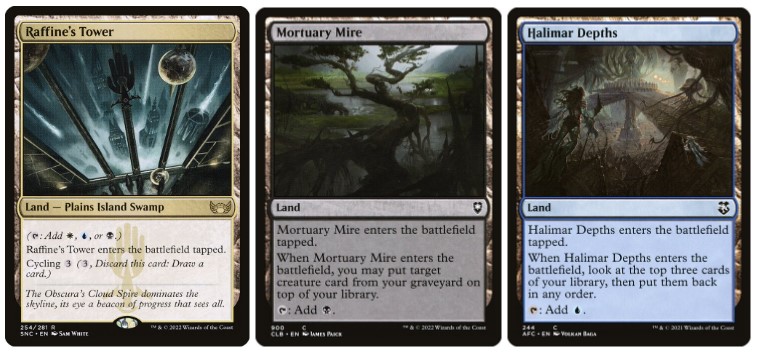
STEP 3: The Protein (Acceleration and interaction)
If your deck is an italian sub, the cards that accelerate your resources are the pepperoni and salami piled high. What exactly do I mean by ‘accelerate your resources’ though? Any card that produces you more mana going forward, or gives you the opportunity to cast more cards than you have access to are going to be what you’re looking for.
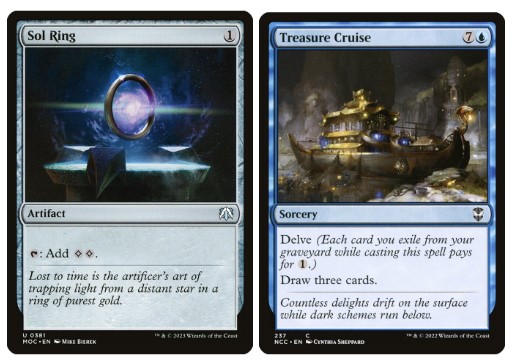
Fan favorite Sol Ring is a perfect example of mana acceleration, often referred to as ‘ramp’ by players. It’s a game piece that produces two mana each turn, which you would not have had access to if you had never cast it. The same is true when it comes to drawing cards. Spells or permanents that draw you more than one card (or give you the ability to cast more than one card from elsewhere) over the course of the game accelerate you on perhaps the most important resource of all: cards to play. Treasure Cruise is a prime example, you’re spending one card to gain access to three cards. When it’s all accounted for, you’ll want to spend 10 slots of your deck on ramp pieces and 10 slots on card advantage, give or take a couple cards.
When it comes to picking acceleration for your deck, there are a few generically powerful options such as Sol Ring or the Talisman cycle, but it’s always interesting to try to pick acceleration options that synergize with your deckbuilding goal. For example, with my build-along Yennett deck I’m choosing card acceleration pieces that reward me for fiddling with the top cards of my library. Dark Confidant and its ilk are a great pick here, because if I’m able to get a land or a low mana value card on top of my library I’ll get to pick up an extra card each turn without taking much damage. Vega the Watcher also rewards me for doing what I already do, which is cast cool stuff off the top of my deck.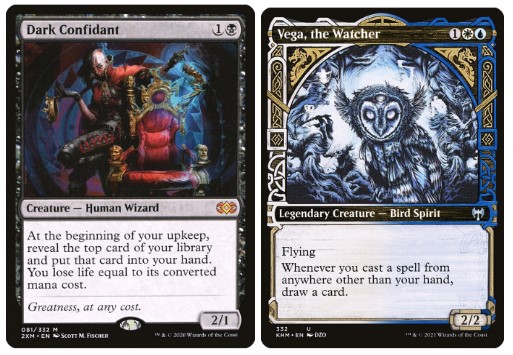
Equally as important as your acceleration are your interaction pieces. These will be the cards in your deck that don’t just help you carry out your game plan, but make it possible for you to stop your opponent’s plans. Interaction pieces are cards that say “Destroy/Exile target thing,” “Counter target whatchamacallit,” or even “Destroy all thingamajigs.” You’ll want about 10 slots for these as well, and much like your acceleration there will often be on-theme cards for your deck that can do this.
STEP 4: The Toppings (On-theme cards)
Eating a sandwich without the crisp crunch of lettuce and other various toppings just isn’t the same. Sure, it gets rid of your hunger and provides you with some nutrients, but it’s certainly no holy product of the culinary arts. The same is true for a deck that’s all acceleration and no theme. It can win games if you play it right, but it won’t be quite as fun as if you had a lovingly hand-crafted and interesting theme. This is the area in deckbuilding where you really get to add the cards that really make your deck tick, as well as add your personal flair to the deck with any pet cards or old favorites.
A great place to begin when choosing cards for this category is to ask yourself what your commander wants from you mechanically. Most cards ask a ‘question’ that can be ‘answered’ by another card. Yennett’s question is: “Do you have a card with an odd mana value on the top of your library?” To answer that, we’ll need lots of cards that put specific cards on the top of the library, as well as impactful cards with odd mana values that I can cast for free. As perhaps the best example in the game of top-deck-fiddling, I’ve chosen to run Sensei’s Divining Top to easily manipulate what’s on top. As a great example of a payoff, I’ve chosen Void Winnower. Not only is it a large threat of an odd mana value, but it can shut down about 50% of our opponent’s cards.
Another great place to look when trying to fill out your toppings is for cards that ask the same ‘question’ as your commander. For example, Vesuvan Drifter from Aftermath wants me to have a big and splashy card on top of my deck, just like Yennett does. A little consistency never hurts, in fact, it will do wonders for your win/loss ratio. In general, you want the ‘toppings’ of your deck to be cards that answer each other’s questions.
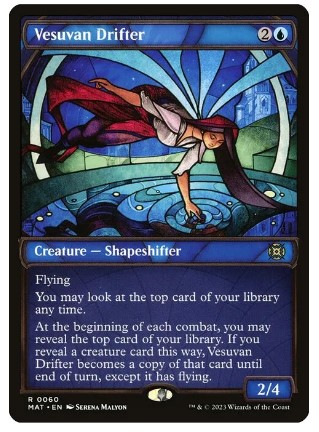
STEP 5: The Dressing (Win conditions)
Some of you may be grabbing your screen with salami-grease-soaked hands shouting “But isn’t dressing a topping?!?” My answer to you is that if you’re yelling at an article on a game store’s website you probably have deeper issues than fixing up your deck building skills, but also that yes, dressing is a topping. A particular type of topping. And that’s exactly what your win conditions should be in your deck, a strong game piece that synergizes with your board SO well that it can win you the game.
Usually I like to identify 3-5 cards that will be the cards that actually eliminate opponents. Cards that can cause a lot of damage or create a whole lot of permanents will generally be the cards that you’re looking for here. Classic commander win conditions are cards like Craterhoof Behemoth and Rise of the Dark Realms. Their value is clear and immediate, they’re the type of card to make your opponents mutter an expletive.
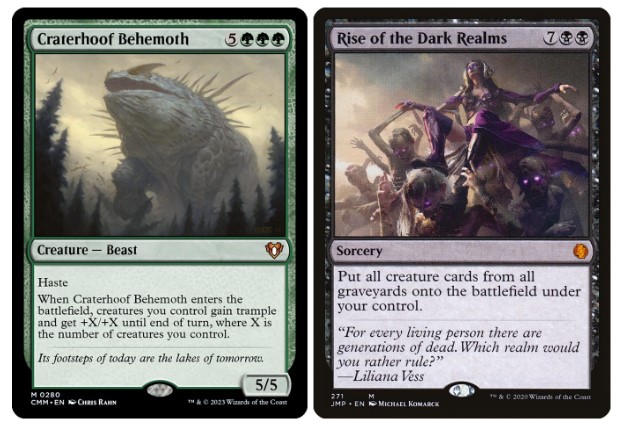
As for the Yennett deck I’ve built alongside this article, it’s no coincidence that many of the cards I want to be casting for free will also be the big and splashy ones. Cards like Ulamog the Infinite Gyre can demolish an opponent’s board if it swings in. I mentioned Rise of the Dark Realms as being particularly potent, and it’s got an odd mana value, so why shouldn’t I run it? One last one that’s especially on theme is Baneful Omen. It’s another payoff for manipulating the top card of my deck that will let me knock everyone’s life totals down each turn.
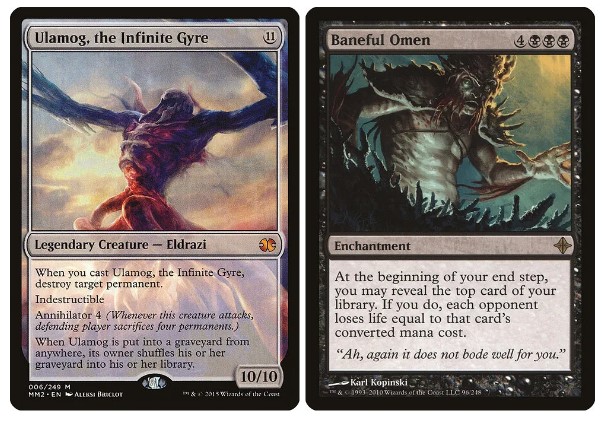
I’ve certainly babbled enough in this sandwich-fueled deluge of deck construction, so I asked some of our local Magic community members “If you could go back to when you first got into the game and tell yourself one thing about deckbuilding, what would it be?”
Here are some responses I got:
“Run interaction! Combos are fun, but you won’t have a combo if it gets countered.”
“Run. More. Lands.”
“Modal double faced cards do not count as lands.”
“Lands are not meant to be cut in lieu of flashiness.”
“Don’t be stupid, stop at 100 cards.”
So go ahead, get brewing, and sleeve up your new hoagie of a commander deck. One last step that many ignore is to shake it up every now and again. If a deck isn’t performing the way you want it to, sometimes a few quick swaps for more on-theme cards can give the deck that boost it needs to play in a way that you like. Come on into the store Wednesday evenings and Saturday afternoons to try out that sweet new deck, and I’ll be there to sign you up!
